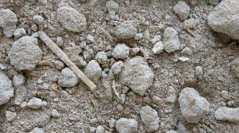

 Comptes Rendus Palevol
5 (8) - Pages 919-925
Comptes Rendus Palevol
5 (8) - Pages 919-925A study was conducted on petrographic thin sections of coprolites from the Neolithic site of Hârşova. Two varieties of coprolites, a compact and a friable one, could be distinguished. Both types contain bone particles, which is indicative of a carnivore or an omnivore's origin. Complementary light-optical- and cathodoluminescence-microscopy analyses were carried out on coprolites. Cathodoluminescence microscopy clearly revealed a variable degree of Mn-bearing calcite precipitation in the pores of the coprolites. This mineralization was likely caused by advective water transport through the pore system. Therefore, cathodoluminescence investigations show a great potential to gain a better knowledge of the early fossilization process in coprolites.
Coprolites, Taphonomy, Cathodoluminescence, Palaeoparasitology, Neolithic, Romania